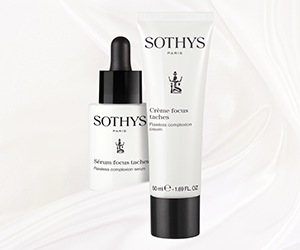
If your skin gets dry or dehydrated during winter, you’re not alone. Dry and dehydrated skin is particularly common during the colder months, because humidity levels drop. When the air is cold and dry, the water in our skin evaporates more quickly. This can leave your skin feeling dry or tight, and may even lead to flakiness.
While there’s nothing we can do about the temperature, there’s a lot we can do to hydrate and moisturise our skins. But should we be moisturising differently during winter? Should we change up our regime?
We asked two industry leaders, Karen Bester (medical trainer at Lamelle Research Laboratories) and Dr Alek Nikolic (skincare expert and founder of SkinMiles) for more info about how to moisturise correctly, to ensure our skins are hydrated and protected during the winter months.
Should a moisturiser do more than just moisturise?
In the past we thought of moisturisers solely as moisturising creams, but today, many are formulated to also address skincare concerns, like to help fight pigmentation, acne, ageing and more. Is it better to address skincare concerns with a serum, and use a moisturiser simply for its moisturising benefits? Or should you be looking at a moisturiser that offers multiple benefits?
Dr Alek: “Recently we have seen a trend in the simplification of skincare regimes, as people want to minimise the number of steps involved wherever possible. Although most moisturisers are formulated to cater for specific skin types (oily, dry, sensitive, etc.) and concerns (ageing, pigmentation, etc.), typically the concentration of the active ingredients are lower than that found in serums.
The best way to achieve results would be to use a serum and a moisturiser together, preferably products which target the same skin concern. However, this is dependent on the concentration of the ingredients found in the products being used.”
Karen: “Correcting or giving relief to dry skin, and managing skin correction of other problems are really two different challenges.
In the industry we have consumers complaining that their skin is dry – product houses develop moisturisers. Generally (and this is a broad generalisation) products that contain vegetable or plant based lipids “hydrate” or “moisturise” the very top layer of the corneum, the top dead layer of skin. This does provide relief and does offer protection, but is easily washed away with the next cleanse, even though the lipids chosen are in many cases skin-compatible. You then reapply more moisturiser, and the constant application and washing off becomes a never-ending cycle, only offering temporary relief and not correcting the root of the skin challenge.
At Lamelle, we manage dry skin very specifically by replacing the lipid bi-layer inside the corneum with a lipid bi-layer compatible ingredient. The lipid bi-layer is the layer make up of lipids and water in between the dead cells of the corneum, the corneocytes. This restructuring cannot be washed of. Combined with other ingredients that replace lost pH balancing proteins and calm any inflammation, this gives the skin a chance to normalise its own processes, managing dryness in its core.
This lipid bi-layer technology and the use of other skin-compatible ingredients does mean that we can deliver active ingredients into the lower layers of the skin. The skin conditions we are hoping to manage are all ‘chronic’ in a sense. Hyperpigmentation, ageing, acne and even the prevention of ageing needs daily applications of active ingredients. We have formulated those ingredients into our moisturisers, but we can also add serums and boosters that contain high concentrations of one ingredient. These serums would be to manage specific challenges or to add more results for a particular challenge that the consumer is struggling with. For example, we combine Lamelle Correctives Brightening Serum with the Luminesce products; these are active ingredient moisturisers for the whole face, neck and décolleté, created for consumers that have melasma.”
Layering products optimally
Once you’ve cleansed your skin, it’s time to follow with your serum and moisturiser. But is there an optimal time in-between?
Dr Alek: “Ideally one should wait until the serum has been fully absorbed, which usually takes about a minute. Typically, only a small amount of the serum is needed, so absorption is fairly fast. You should be able to feel on the skin if the serum has been absorbed or not, and wait before applying the moisturiser.”
Karen: “That will differ from formulation to formulation and also from formulator to formulator. With Lamelle serums, we have considered this when formulating the products. All our Correctives are formulated to penetrate into the skin very quickly. It makes for easy use and your skin should never feel ‘overloaded’ with product.”
Evening routine
If you apply your moisturiser right before bedtime, will it “rub off” on your pillow? Is it better to apply it earlier in the evening to allow it more time to penetrate the skin?
Dr Alek: “Yes, if you apply your skincare regime, including moisturisers, and then immediately fall asleep, some of the cream will rub off on your pillow. The best approach to prevent this from happening would be to apply the product earlier.”
Karen: “Even though night time moisturisers can be slightly richer than day time moisturisers, they should have mostly penetrated by the time you have done your routine and read your night time emails or caught up on social media posts. There is no special waiting time with Lamelle evening use products.”
Hydrating ingredients
What sort of ingredients should you look for in a hydrating moisturiser?
Dr Alek: “A really good moisturiser will contain ingredients that hydrate, improve the barrier function, and help lock moisture in the skin (prevent trans epidermal water loss). Examples of good moisturising ingredients include ceramides, shea butter, and coconut oil. These ingredients will help prevent water loss from the skin. Ceramides have the added function of improving the skin barrier.
Ingredients like hyaluronic acid, propylene glycol, aloe vera, alpha hydroxy acids (such as glycolic acid), urea, and glycerine, tend to absorb and increase the water content within the skin cells.
Also look out for moisturisers which contain vitamin E, which acts as an antioxidant, especially when used in conjunction with vitamin C. It will also help to repair the skin barrier and improve nourishment.”
Karen: “There are so many categories of ingredients that hydrate the skin. Skin-compatible natural moisturising factors (NMFs), carbohydrate type ingredients, ceramides, free fatty acids, avocado oil, evening primrose oil, alpha tocopherol (Vit E), hyaluronic acid based ingredients, shea butter are all great for hydration.”
Clashing ingredients
If you are using a serum containing active ingredients, are there any ingredients you should avoid in a moisturiser?
Dr Alek: “The only concern would be combining a serum and a moisturiser that contain the same active ingredients such as retinol, vitamin C, salicylic acid, alphahydroxy acids, etc. These active ingredients can be sensitising and reactive on the skin, so doubling up or increasing the concentration can produce unwanted side effects.
There are no real ingredients that clash with each other if they are within the recommended and tolerable concentrations. I do see glycolic acid and retinol mentioned often as a couple that should not be used together. In my opinion there is nothing wrong combining these two ingredients, and in fact the skin effect will be increased by combining retinol and glycolic acid. However, these the combination of these two ingredients can increase sensitivity reactions with certain skin types.”
Karen: “Clashing of ingredients should be a consideration when formulating products, and generally product houses will warn if here is any risk. I am, however, more worried about overloading the skin with one ingredient. For instance, adding an RA serum to a product that already contains a high concentration of the same or another retinoid (vit A). In this case the skin will become irritated, itchy and inflamed. If you are unsure of the ingredients you are already using take your products with you on your next salon visit. You skincare professional (doctor, therapist or nurse) will be able to help you to decipher the ingredient list.”
Eye creams
Is it okay to apply your moisturiser around the eye area or do you need to use a separate eye cream?
Dr Alek: “Generally speaking, it is fine to use a moisturiser around the eye area. However, some people have more sensitive skin on their eyelid, which can result in a reaction or inflammation of the eye itself. In these cases it is better to use a dedicated eye cream.”
Karen: “Eye creams are developed for the thinner more fragile skin around your eye. The base of the formula will have a lighter feel to it. The active ingredient are also chosen to manage specific problems seen around the eye area – lines and darkening skin. Eye creams can contain different and more active ingredients for this reason.
Saying that, though, we do realise that in some cases the extra expense of getting an eye cream might be prohibitive. In this case it is good to apply your moisturiser close to your eye. Just make sure the formulations does not irritate your eye and don’t get it into your eyes. Some people’s eye area is very sensitive and reactive.”
Different moisturisers for different seasons
Should you be changing your moisturiser twice a year (using a richer formulation for winter and a lighter formulation for summer) or can you use the same moisturiser all year round if your skin is responding well to it?
Dr Alek: “If your skin responds well to one product then there is no need to use a different moisturiser through the year. There are definitely people that suffer from skin issues as a result of seasonal changes (especially dryer skin during the winter months), and in these cases it would be best to change to a ceramide-rich moisturiser or add a second lipid.”
Karen: “I do not think that is a hard and fast rule. It depends on many factors. Age, geographic area, skin concern and ambient humidity over the changing seasons need to be considered.”
This winter, invest in a good quality moisturiser that’ll protect your skin from dryness and dehydration. Some of our recommendations include:

Lamelle Serra Restore Cream, R530.00, shop here | SKIN Functional Daily Moisturiser, R290.00, shop here | Dr Hauschka Rose Day Cream, R665, shop here | Eau Thermale Avène Hydrance Aqua-Gel, R370.00, shop here | Filorga Nutri-Filler Nutri-Replenishing Cream, R780.00, shop here |NUXE Crème Fraiche de Beaute 48H Moisturising Cream, R530.00, shop here | ZERO Day Cream, R399.00, shop here | Annique Rooibos Forever Young Anti-Ageing Revitalising Cream, R629.00, shop here | Neutrogena Hydro Boost Water Gel Moisturiser, R139.95, shop here | Sothys Hydra Comfort Youth Cream, R945.00, shop at select spas and salons.






One Response
OMG exactly what I needed!❤ thank you for sharing.